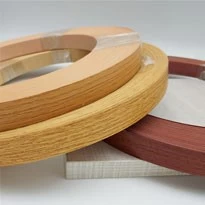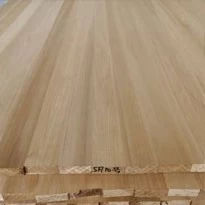Which one is more suitable for your business, carbonized poplar wood or carbonized paulownia wood?
When considering using carbonized poplar or carbonized paulownia (paulownia wood) for furniture making, it is essential to comprehensively compare the characteristics, advantages and disadvantages, and applicable scenarios of these two materials. Here is a detailed analysis:
1. Physical Characteristics
- Carbonized Poplar: The carbonization process enhances the hardness and wear resistance of poplar. High-temperature treatment restructures its interior, increasing stability and reducing cracking and deformation.
- Carbonized Paulownia Board: Paulownia naturally has a light texture, which remains light after carbonization, but with increased strength. Carbonization also improves its stability, minimizing deformation caused by environmental humidity .
2. Aesthetic Appeal
- Carbonized Poplar: Post-carbonization, poplar displays a dark surface with more distinct grain patterns and an elegant silky sheen, suitable for creating a rustic and elegant furniture style.
- - Carbonized Paulownia Board: Paulownia wood turns darker after carbonization, with clear textures and a natural beauty, though the color may be relatively uniform .
3. Workability
- Carbonized Poplar: Despite increased hardness, it maintains good processability, allowing for cutting, carving, and shaping .
- Carbonized Paulownia Board: Due to its inherently soft texture, even after carbonization, it is not difficult to process and suitable for various manufacturing treatments .
4. Environmental Friendliness
- Carbonized Poplar: The carbonization process does not involve any chemical reagents, preserving the natural essence of the wood and making it very eco-friendly.
- Carbonized Paulownia Board: Similarly, paulownia undergoes only physical modification at high temperatures without water, containing no chemical additives and meeting environmental standards .
5. Preservation and Insect Resistance
- Carbonized Poplar: High-temperature treatment kills most of the fungi and insects inside the wood, significantly enhancing its preservation and insect resistance.
- Carbonized Paulownia Board: Carbonization also endows paulownia with good preservation and insect resistance, extending its service life.
6. Application Scope
- Carbonized Poplar: Suitable for furniture, outdoor flooring, wall panels, garden ornaments, and more .
- Carbonized Paulownia Board: Its lighter characteristic makes it frequently used in making lightweight outdoor products, in addition to furniture and decorative materials .
7. Cost-effectiveness
- Carbonized Poplar: Price varies with the degree of carbonization and craftsmanship, but it generally belongs to high-end building materials .
- Carbonized Paulownia Board: Paulownia wood is inherently low-cost, and carbonized processing offers a higher cost-performance ratio, suitable for consumers with limited budgets who pursue high-quality furniture .
In summary, carbonized poplar and carbonized paulownia boards each have their advantages and disadvantages. Carbonized poplar excels in durability and workability, making it suitable for furniture requiring high wear resistance and damage protection; while carbonized paulownia board, with its lightweight, easy processing, and eco-friendliness, becomes the ideal choice for making lightweight furniture and outdoor products. If you prioritize furniture's durability and appearance, carbonized poplar is the way to go; if you prefer a lightweight, eco-friendly, and easily processable material, then carbonized paulownia board is more appropriate.
Overall, when selecting carbonized wood, consider the furniture's usage environment, functioIn summary, carbonized poplar and carbonized paulownia boards each have their advantages and disadvantages. Carbonized poplar excels in durability and workability, making it suitable for furniture requiring high wear resistance and damage protection; while carbonized paulownia board, with its lightweight, easy processing, and eco-friendliness, becomes the ideal choice for making lightweight furniture and outdoor products. If you prioritize furniture's durability and appearance, carbonized poplar is the way to go; if you prefer a lightweight, eco-friendly, and easily processable material, then carbonized paulownia board is more appropriate.








